Music in 5.1 Dimensions: How the Best Surround Mixers Approach the Soundstage
Surround sound made its first public appearance in 1941, when Disney released its groundbreaking animated musical, Fantasia.
Ever since then, surround systems have increasingly been used to enhance the emotional impact of films (which George Lucas has famously, and accurately, declared are “50% sound.”)
In the mid 1990s, a small but meaningful mass market for digital home theater systems began to emerge, and by the end of the decade the first 5.1 albums began hitting shelves, piggybacking on this trend. By 2005, the GRAMMYs had added a “Best Surround Sound Album” category.
Today, with surround systems ranging anywhere from a few hundred dollars for an all-inclusive “home theater in a box”, to a few thousand dollars per speaker at the high end, there is a potentially larger market for surround music than ever before. And that market continues to grow, slowly but surely.
Although consumers are slow to adopt systems that require a setup and are hampered by competing delivery standards, surround sound has at least one thing going for it: Few who get bit by the surround sound bug ever want to go back to plain old stereo.
With this in mind, we talked to a handful of the very best surround mixers in the business, including GRAMMY nominees and winners like Bob Clearmountain, Frank Filipetti, Jim Anderson, David Fridmann, Nick Davis, Ronald Prent, Morten Lindberg, Martin Walters, Keith O. Johnson and Greg Penny, about how to master the format.
Pick Your Approach: Real or Hyper-Real?
Although there is a myriad of ways to approach surround music mixing, we can think of them as falling into two broad categories:
The first – which is especially popular in classical, jazz, and live pop recordings – is to go for a sense of convincing realism. Engineers working in this mode strive to re-create the sense of being in an actual acoustic space with a group of musicians.
The second approach is to throw out the rulebook, and treat surround like a completely new artistic medium. Mixers working in this way exploit the surround field to achieve a novel and ear-opening experience with a production aesthetic as developed as the music itself.
Aiming for Realism
In the rock and pop world, the more realistic approach tends to be most common on live recordings.
“Live albums work really well in surround because you can get the atmosphere of the concert without cluttering up the sound with the audience mics,” says Nick Davis, a British audio engineer who has mixed live and studio recordings for Genesis, XTC, Björk, Phil Collins and The Velvet Underground.
“In the past, my beef with live albums in stereo is that although the audience mics add a lot of energy, they will ruin the sound of the band. But with a live album or DVD in surround, you can pull the audience out of the music, and have the music coming out of the front which works really well.”
In addition to the conventional home theater market, this approach to surround music has probably had its greatest audience with the fidelity-obsessed fans of jazz and classical music.
Keith O. Johnson of Reference Recordings adapted his stereo hi-fi approach in order to win the GRAMMY for Best Surround Sound Album in 2011 for his very first commercial 5.1 release – a recording of The Kansas City Symphony playing Britten’s Orchestra.
“My style of recording is to try to come as close as I can to capturing what is really happening,” Johnson says. “So I start off with very conservative mic’ing using only a few accent mics.”
“If the space is just right and the group can balance themselves, I can get surprisingly good result with just a few directional mics facing forward and a couple of directional mics facing backwards and not a whole lot more than that. The more accent microphones you use, the more bleed and cross-feed you get, and that ruins the very kind of presentation surround wants to have.”
“I use something very close to a Decca tree, although in this case the center mic is a stereo pair instead of being mono. Anything that needs an accent mic I’ll also do in stereo rather than mono. And the final assembly of it all is done with much consideration of the time domain. So if I want to shift something to the left or the right I’m using a time-shift, and maybe a bit of EQ, which is a little bit more complicated than just using a pan pot.”
“When you get it right, it creates a picture in the brain. I call it ‘visual acoustics’. And when that mental picture is there, you get a whole lot more. Just like with a movie.”
Going Beyond the Real
Dave Fridmann, best known for his bold and uncompromising mixes for The Flaming Lips, as well as work with bands like Sleater-Kinney, Weezer, Mogwai, Neon Indian, CYHSY and Café Tacuba, has a very different perspective:
“When I first bought a surround system for my own personal use, I remember the salesperson complaining about some Steely Dan album that came out because it had the horns in the back. And I thought, ‘Well, if that’s upsetting you, then you’re really not going to like what I’m going to do with it’.”
“He was so concerned with the idea of re-creating some sort of live experience. And I mean, if you’re making a live DVD or album, then I suppose that’s a valid concept. But for making new pieces of art and new pieces of music, why would you ever want consider any of those things? That doesn’t make any sense to me at all.”
“For better or for worse,” says Fridmann, “I think we were completely unconcerned of what any convention would be or should be in regard to that.”
Nick Davis seems to agree, at least when it comes to studio albums: “With a studio album, the whole palette is broader. You’ve got no fixed rules and no audience mics, so when it comes to the rear speakers you’ve really got a free hand.
“I really enjoyed re-mixing the Genesis studio albums in surround,” he says. “In that music there are these big emotional moments where I’d make full-on use of all five speakers, and then there are these moments where I might just use the center speaker to achieve a really small mono effect.”
“But whatever you do, must be tasteful,” he adds. “It can’t just be for the effect. It must work because it musically and artistically works. Not just because it works technically.”
Finding the Balance
Frank Filipetti, a monster mixer who has worked with everyone from Korn to James Taylor, Dolly Parton to The Plasmatics has been working in surround far longer than most.
In 1997, he and the late Phil Ramone worked on David Grusin’s rendition of West Side Story, which became one of the first 5.1 albums ever commercially released.
Since then, Filipetti has taken almost every approach on the map, from realist sound-staging to avant-garde inventiveness and everything in between.
“There have been some projects, like the Frank Zappa thing I did a few years ago, where I looked to put you in the center of the band. Even though it was a live show, I had Frank in the front center, Napoleon Brock in the left rear speaker, and George Duke in the right rear speaker. So there was a kind of a triangle formed by these guys with the rest of the band around them.
“For Dave Grusin, I liked him front and center, but put the strings halfway between the front and the rear, with the reeds and the horns all the way in the back. That gave some real space for the rhythm section, while also really enveloping you, and giving the whole thing a sense of dynamism. So there’s no tried-and-true rule for me. It’s just that the material speaks to me in different ways.”
Whether he’s going for a natural presentation or something more unusual, Filipetti has developed a few good tricks that have survived the years:
“The way I approach surround mixes is probably 180° away from the way I approach stereo,” he says. “I know that some guys will do both their stereo and surround mix at the same time, but I have not found a convenient way to do it really well.
“With a stereo mix, since everything is coming out of just two speakers, the hardest part is to differentiate between instruments in the mix. So in stereo, I’ll use panning and EQ to try and give each instrument its own space without being pushed aside by other instruments in the same frequency range.
“But when I go to 5.1, I find it’s just the opposite: It’s very easy to set things apart in their own space, and I find that instruments can really pop out at you without EQ. So I’m looking to add the glue in 5.1, where I’m looking to add the specificity in a stereo mix.
“I also tend to think about the mix in stereo planes when I’m mixing in 5.1. If I’m doing a realistic kind of mix, I may try to set it up so that you have the proscenium wall way out ahead of you, and then the stage right in front of you, then the first row of the audience, then the middle rows of the audience behind you, with the rear wall all the way at the back of the soundstage.
“So, if the lead vocal is in the front center channel, I may bring a little bit of it into the rear surrounds in stereo, and that will bring it forward into the room just a little bit closer to you. If you instead play something in the center and try to spread it out into the left and right speakers, the comb-filter effect that occurs as you move your head is just a little too much for me to handle. But, by putting a bit of the vocal in the rears, I find I’m able to bring the vocal forward and spread it out a bit without that comb filtering effect that happens in the front. I can do the same kind of thing with the instruments, by placing them way out against the proscenium wall and then keep moving them forward. There is real a sense of depth in that.
Filipetti notes that these “stereo planes” don’t just go in one direction. You can also think of planes that go perpendicular to these. (For instance, there’s one between the front right and the rear right speaker.) Or, you could even think of diagonal planes, like the one from the front right to the rear left speaker. He sometimes adjusts reverbs along these axes as well. To get around his surround field, Filipetti has come to rely heavily on the “Spanner” plugin for Pro Tools by Maggot Software, which he places on every track.
“On every project, regardless of what I do, I’ll also generally set up four or five reverbs in these stereo planes,” he says. “There may be a short reverb all the way in the front, and a very long reverb all the way in the back, probably with a one or two hundred millisecond pre-delay. I’ll also set up various reverbs maybe halfway between the front and the center of the room.”
Five Birds, One Stone
The Dutch producer/engineer Ronald Prent has spent most of his career with hard rock bands like Queensrÿche, Manowar, Def Leppard, Primal Fear, Zeromancer, Iron Maiden, Dire Straits and Live.
His first surround mixes were for the electronic metal band Rammstein and the progressive punk rock group Guana Apes:
“It was a terrific experience to mix the guitars as loud in the front speakers as in the rear speakers and to really kick everybody’s ass,” he says. “I think surround is a really great enhancement to music.”
“I treat them as five equal speakers,” Prent explains. “The way I think about it, a surround mix is basically coming up with a choreography for five loudspeakers. I might put drums in the back for part of the song, and mix them as loud as if I had put them in the front – because that’s what works for the arrangement.”
Unlike Filipetti and many others, Prent will often work on both his stereo and surround mixes at once.
“I’m in the fortunate position [at Wisseloord Studios] where my console [an API Vision] does both the stereo and surround mixes discrete from one another at the same time. So there’s no need to do a fold-down.
“If it’s just a stereo project – which a lot of my clients still are – I’ll almost always mix it in surround at the same time, just for fun and for my own practice. At some point I’ll push the button for the client and say ‘Here, you could have this too.’ That’s a “wow” effect that really works.
“The way I do it, it doesn’t cost me any more time. After mixing surround for more than 15 years, it’s not so difficult to do once you’ve got the tools and a concept for how to do it in your head. These days, I can do surround mixes blind, or the other way around, just to see what happens. The one thing you can’t do is just fold the surround mix down, because you get all kinds time-alignment and phasing issues.”
The Sweet Spot
One of the fears often expressed about surround sound is that it must have a narrower “sweet spot” than stereo. That, unlike stereo, listeners can’t walk around the room or do other things and still hear the music as it was meant to be heard. The surround mixers I spoke to didn’t seem to buy this much at all.
“I suppose people said the same thing when we went from mono to stereo,” says Nick Davis. “I’m sure that if you’ve got it playing in another room, it’s going to sound just as fine, because it’ll all mix together through the door, just like a stereo mix or a band playing in the other room.
“Sure, if you’re in the room moving around, it’s going to change. But if you’re up and about doing other stuff, I mean, you don’t really care about that right now anyway, do you?”
Some of the mixers even see these shifts in perspective as an asset:
“Surround is a very neat thing,” says Keith Johnson. “You can walk around in the room and get an experience of the space, just like in real life. You don’t have to be nailed to the chair for it happen. So you shouldn’t get awfully involved with the idea of only one place in the room being right.
“With surround,” says Johnson “You should be able to stand almost anywhere, and something’s going work for you. With a good recording, you should be able to turn sideways and listen to the right front and the right surround and still have a full image, because that’s what would happen in a real hall.”Britten’s Orchestra
Ronald Prent, for as hyper-real as he likes to mix, also tries to create a 360° experience that can be appreciated from a variety of angles.
“I like to put the vocal in the center speaker because it anchors the mix,” Prent says, “ But also because if you do that, you don’t have to be right in the center of the sweet spot to get the right perspective.”
“So I’ll put the vocal in that center speaker, and then feed it to four delays that go to the other four speakers, each with a delay time somewhere between 12 and 48 milliseconds. The brain registers this as natural reflections, just like in a real space. So even though it’s in one speaker, it doesn’t feel isolated. It feels like it’s in the room.”
Dealing with the Sub
The consensus among the mixers we surveyed is that the LFE, or “.1” feed should generally be used as a special low-frequency effects channel, and that one shouldn’t rely on it too heavily. It’s also a good idea to send a band-limited signal to this channel, because the subwoofer at the end playback system may not use the same crossover point that yours does.
“There is no real rule for it,” says Ronald Prent. “I basically mix in 5.0 and make sure it sounds good that way. So, if someone does bass management somewhere, it still works.
“I do add the lowest octave of just the bass guitar, filtered, into the LFE channel. And I’ll use it for other effects sometimes, depending on the arrangement. Sometimes, I might put just one tom hit or timpani or explosion in there as an effect, but I don’t rely on it. It’s just a fun tool for me.
Mic Techniques for Surround
Some engineers, especially in the hi-fi jazz and classical worlds, are likely to put a lot less focus on mix choices than we have here.
“A good surround sound is not created in a mix,” says Morten Lindberg, a Norwegian producer and engineer who has racked up no fewer than six GRAMMY nominations for Best Surround Album. “It is made in the recording with dedicated microphone techniques.”
“The composers and musicians should perform to the extended three-dimensional sonic sculpture, allowing more details and broader strokes.”
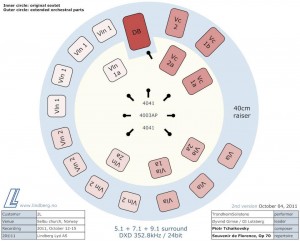
Morten Lindberg’s surround mic’ing diagram for recording Tchaikovsky’s “Souvenir de Florence” with TrondheimSolistene.
With this approach, some of Lindberg’s most engaging recordings aim to put the listener in the center of a group of musicians performing ‘in the round’ in a brilliant natural acoustic space. This is done almost exclusively at the point of capture.
The original surround experiences that Lindberg creates have become so successful that he has begun to focus on them primarily, and it seems to have become a sustainable business model for him. Today, Lindberg’s own company, 2L, releases several new 5.1 works each year in high definition Blu-Ray, SACD and streaming HD formats, for a vibrant niche market of audio lovers.
Many of the pop and rock mixers we spoke to had a slightly different take. Most said there might be cases where they’d add an extra room mic when thinking about a surround mix, but that’s about it.
Living mix legend Bob Clearmountain finds having stereo pairs of mics especially useful in surround mixes: “Any ambience/room mics should be recorded in stereo with two equally distanced mics,” he says. “Especially for drums.”
“I usually point the drum room mics away from the drums, up at the ceiling or walls to give the effect from the surround speakers that the ambience is bouncing off the walls/ceiling. I’ll often record stereo ambience mics on guitars to throw into the rear speakers as well. If possible, it may help the mix to do a quad impulse response of the recording room with a convolution reverb plug-in like Altiverb.”
Not everyone is as particular. Ronald Prent finds that he often prefers mono sources in especially dense mixes. “Sometimes I might add an extra room or two for a drum kit or a piano, but generally it’s just like when we went from mono to stereo: Mono times two makes for much better stereo than a single stereo source.
“If you have lots of mono sources,” he says, “Then you can create a more impressive surround field instead of a coherent and natural surround field. It’s just like recording a piano in a pop piece where a lot of stuff is going on. If you record it with five microphones and ambience and all that shit there’s no room for it! So you end up EQing it so you can fit it in there. Sometimes, you’re better off with just a the mono source.”
Sometimes, when there is enough space, the sky is the limit. Keller McDivitt at Brooklyn’s Dungeon Beach says: “For a film scoring session we did here at Dungeon Beach, there was a solo drum section by a very heavy-hitting Bonham style drummer over a suspenseful scene. We wanted the drums to sound bigger than anything we’ve ever heard, and I think surround mic’ing is a huge part of what got us what we wanted.
“We used a pair of U47s for the main L/R overheads, a C-12 for the “center” overhead, a spaced pair of KM-84s for the “LS/RS” room mics, and a Schoeps for a mono room (also destined for the rear, but dead center). Spot mics for the kick and snare were sent to the center channel, with toms sent to the left and right, all with varying levels send to the sub channel. Mic’ing this kit for 5.1 yielded a massive sound that I had never experienced before, and raised the bar for what I feel like a drum kit should sound like in a mix.”
Why Surround?
The excitement McDivitt conveys when he talks about exploring surround sound is by no means unique. This was another one of the few constants among the mixers we talked to.
“If you’ve ever been to an IMAX theater, and seen something like Gravity, and saw what a difference that screen and that surround kind of an environment does visually, it’s the same thing between 5.1 audio and stereo,” says Frank Filipetti.
“The simple fact is that if you get people to listen to surround in a controlled environment, even at Best Buy or whatever, it’s not even a question. After mixing in 5.1, I hate going back to stereo! Because there is nowhere near the envelopment and the emotional response you get from 5.1. It’s not even close.”
“I think the first thing I listened to in surround was an ELP record, Brain Salad Surgery,” says Fridmann. “And it was awesome. This was a long time ago. I think it was 2000? As soon as I heard it, or heard it in a movie…my first thought was ‘why wasn’t I doing this already?’”
There are still challenges facing surround. Ease of use and conflicting standards are two of them.
But as we increasingly move away from traditional televisions and disc players, and into a world where one feed enters into our homes through a single pipe, and into a main media center, it’s easy to imagine a future where functioning surround systems become the norm, rather than the exception.
As that continues to happen, Nick Davis and Dave Fridmann both suggest that the biggest current hurdle – easy cross-compatability – will be overcome. “That’s our way in,” Davis says.
As small as the surround market is today, these mixers seem optimistic. To the initiated, surround sound really does seem like a no-brainer.
“Go to a friend’s house or to a high end hi-fi shop that has high resolution playback in surround and listen. You’ll never go back,” says engineer Jim Anderson, who won last year’s Best Surround Sound Album GRAMMY for Patricia Barber’s Modern Cool. “As they say, ‘the first one is free’.”
And until we can grow the market and get everyone hooked?
“If we don’t mix for surround,” says Anderson, “There won’t be any surround available to market.”
Justin Colletti is an audio engineer, educator and journalist.
Please note: When you buy products through links on this page, we may earn an affiliate commission.








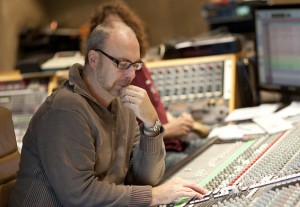
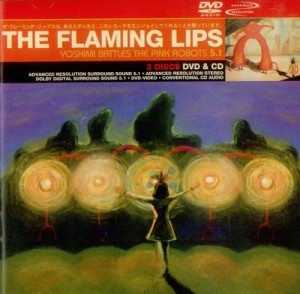
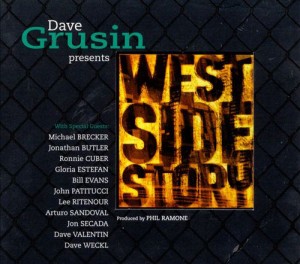
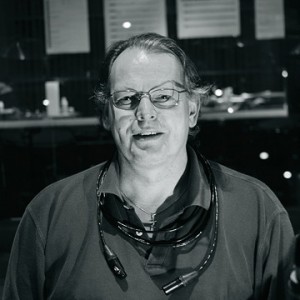
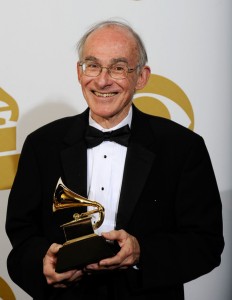
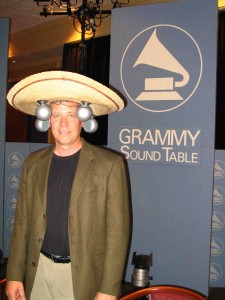
Frans Keylard
May 18, 2015 at 10:56 am (9 years ago)Thanks for this article, it’s good to see that the top minds in the business are involved! Interesting to read that streaming might be the way to really entrench surround. Not today though as compression still manages to ruin the sound compared to disc.